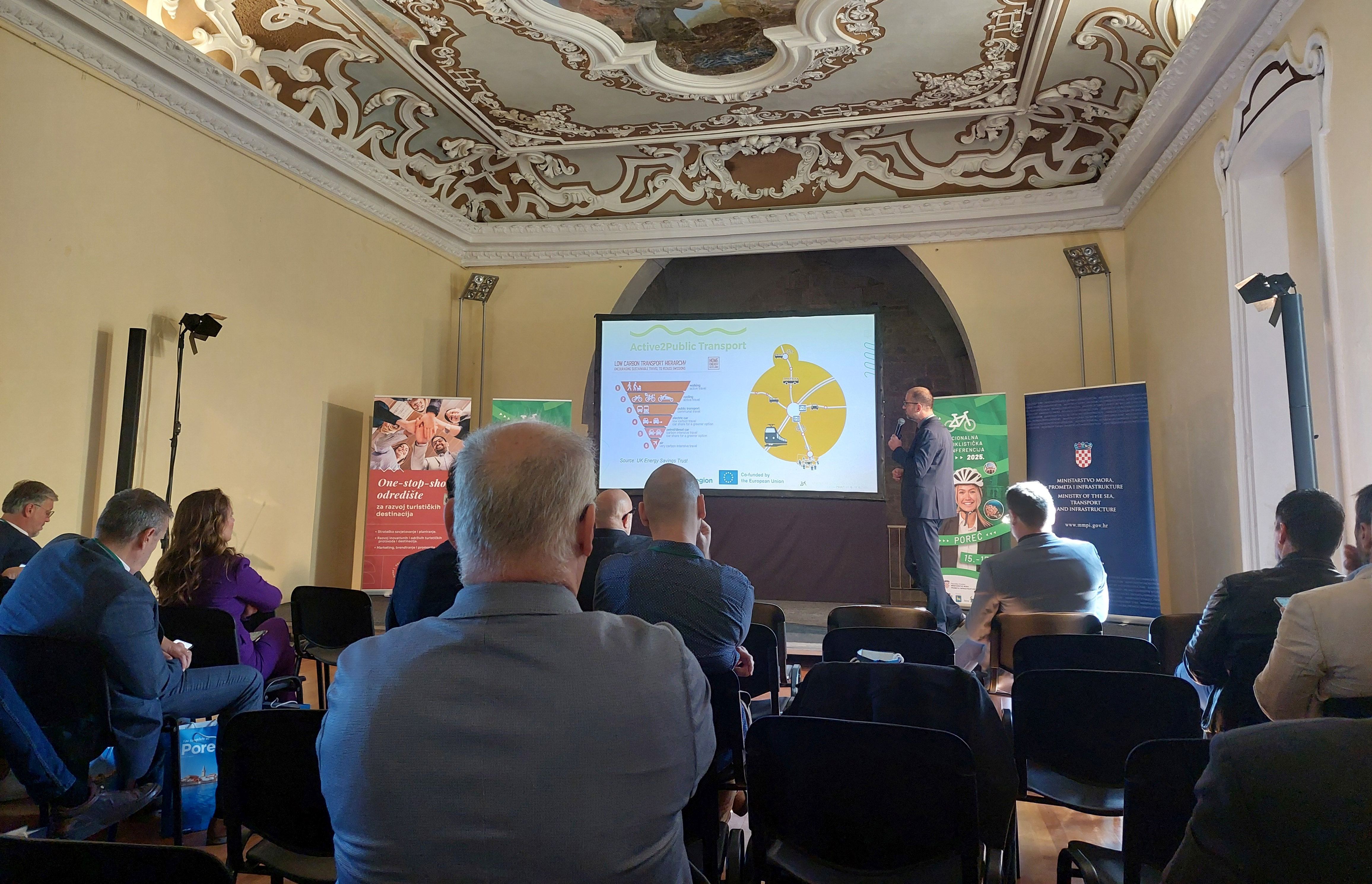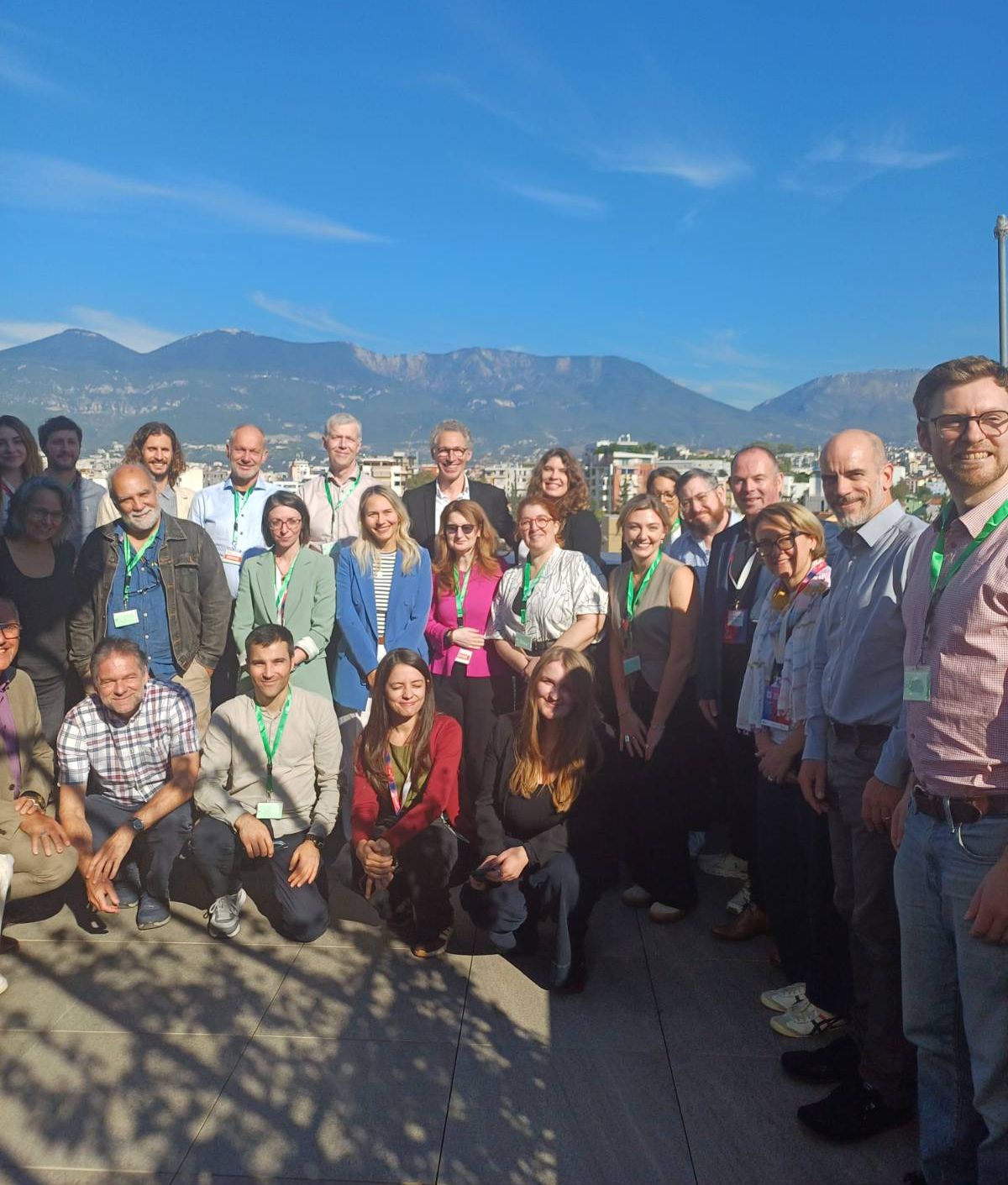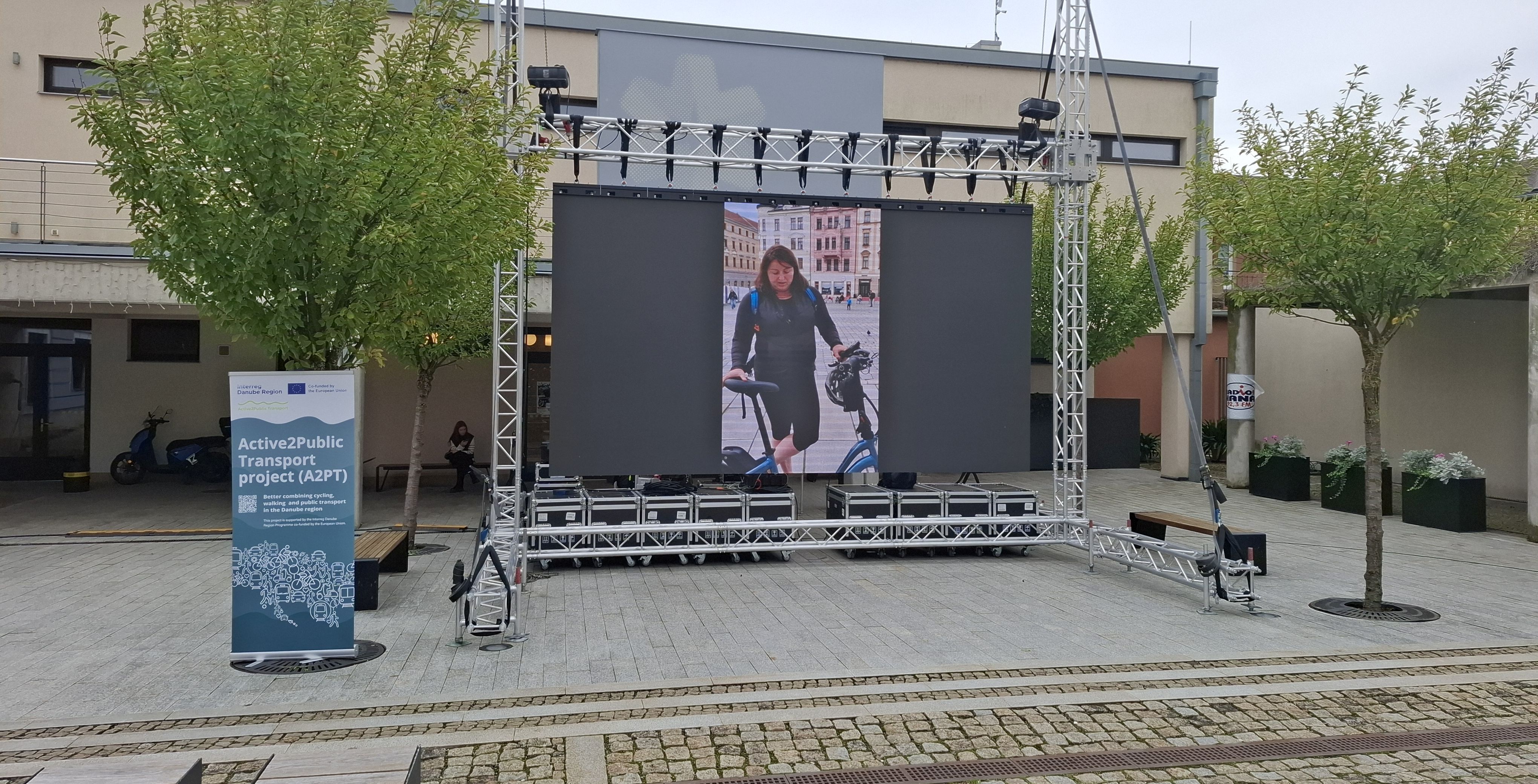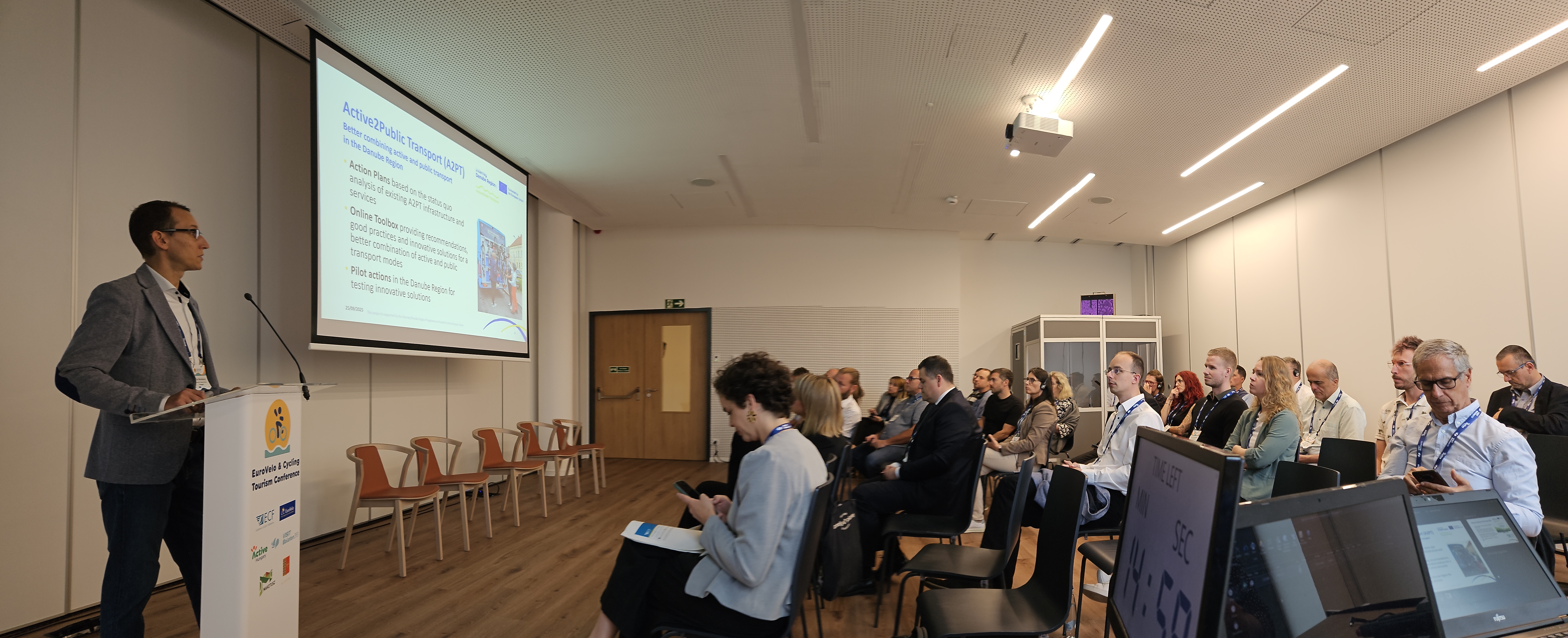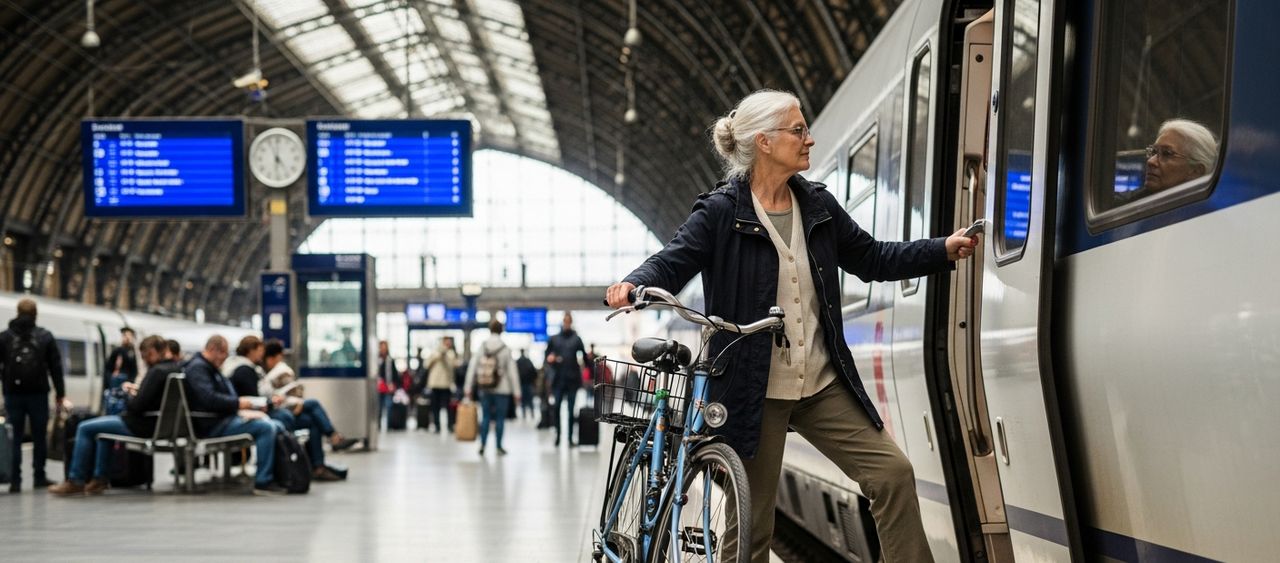
Multimodal on the Move in the Danube Region
Walking or cycling to catch a bus or a train? In the Danube region, this is still far from everyday practice. IRENE BITTNER and JITKA VRTALOVÁ report on how the EU project Active2Public Transport is setting new standards in the mobility transition.
Give your car a break
“Give your car a break” – under this motto, around 50 test participants reshaped their daily routines for four weeks. They received monthly public transport passes for their everyday journeys and had the chance to try out an e-bike, a folding bike, or a conventional city bike for the trip to the nearest stop. Walking or using an e-scooter to reach public transport was also allowed — the only rule was that the car had to stay in the garage.
This trial run is just one of seven pilot actions within Active2Public Transport, an EU-funded project. Its goal is to raise awareness about the multimodal and climate-friendly combination of active mobility and public transport. The initiative targets residents from nine regions across the Danube area and involves a wide range of stakeholders and decision-makers between 2024 and 2026.
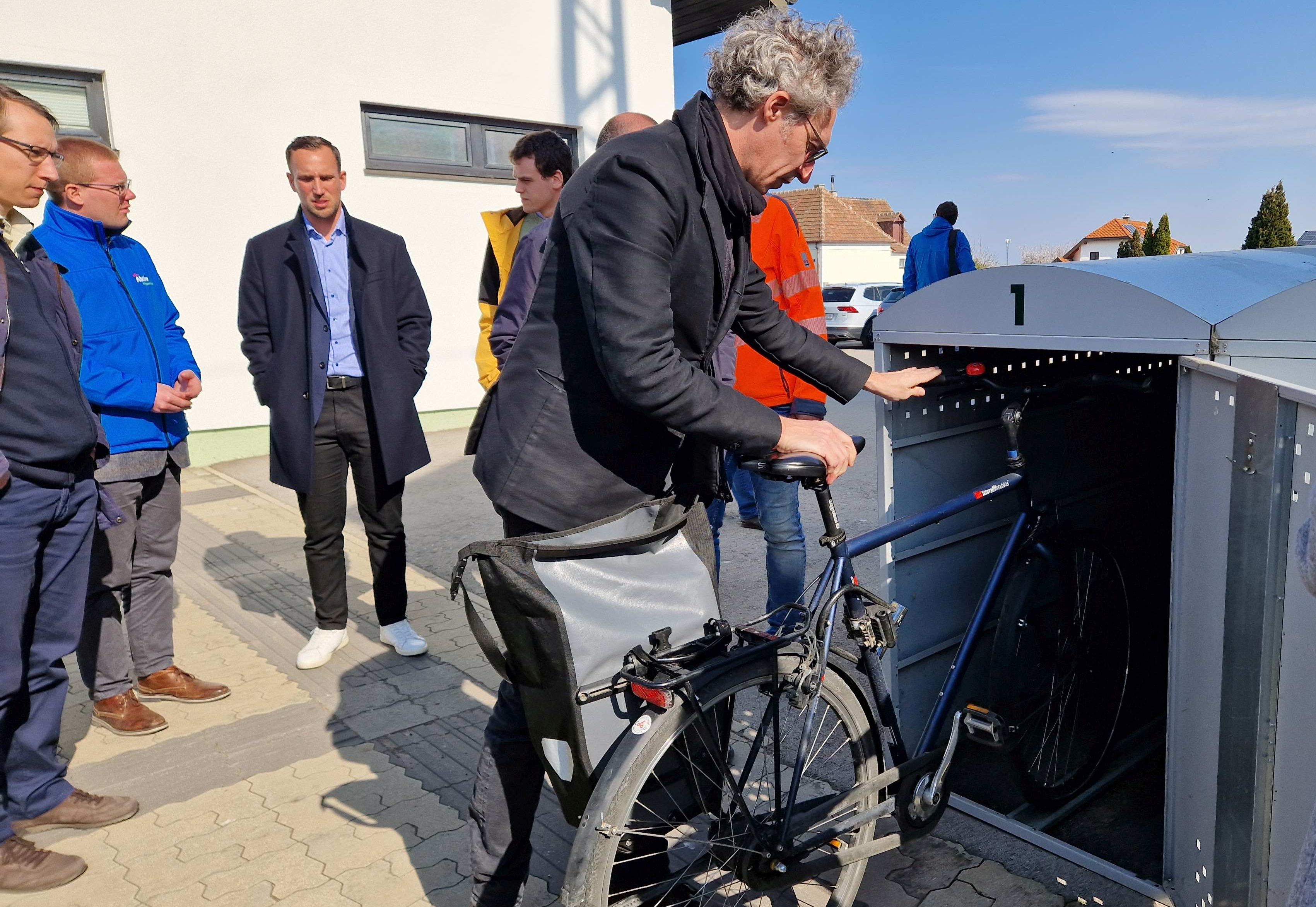
Either park the bicycle securely in lockable boxes, as seen at the train station in the Burgenland in the small town of Wulkaprodersdorf… © Photo: Jitka Vrtalová
Successful Innovations
In Southern Burgenland and the Bratislava region, bicycle transport on rear-mounted bike racks in cooperation with regular bus services has been tested for operational use since July 2025. In the urban regions of Olomouc and Bucharest, as well as in the Belgrade district of Novi Beograd, secure bicycle parking at interchanges such as railway stations (so-called “mobility hubs”) is being piloted through lockable bike boxes. Other pilot actions focus on digitalisation: the Bratislava region introduced combined fares and digital ticketing for passengers, while in the Czech Republic digital planning tools with geoinformation on online maps are being developed for transport planners.
Pilot actions were also designed in cooperation with municipalities. Ljubljana’s main railway station will undergo complete renovation in the coming years. An existing transport corridor leading to the city centre is intended to provide a more multimodal connection to the new station. Along this route, Miklošič Park and the adjoining streets are set to receive temporary traffic-calming interventions. The idea is to establish permanent walking and cycling-friendly connections to the station in a next step. And it’s not only large cities experimenting with transforming station forecourts: in the Burgenland town of Neufeld an der Leitha, temporary traffic-calming measures around the station — and thus improvements in crossing opportunities for pedestrians and cyclists — are currently under discussion.

…or simply take the bicycle along on trains and buses without any hassle. © 2 Photos: left side with train © Gregor Steklačič; right side with bus © Emanuela Dimitriu
Multimodality as a Key to Climate Neutrality
According to ODYSSEE-MURE, the EU-wide database monitoring energy efficiency in the 27 Member States, almost 90% of energy consumption in passenger transport in the Danube region in 2023 was attributable to car travel. In contrast, all journeys by bus and rail combined accounted for only about 10%.
Switching to electric cars alone will not be sufficient to meet climate targets. Shifting to more climate-friendly modes of transport is therefore a crucial factor on the path toward climate neutrality by 2040. The Active2Public Transport project aims to demonstrate to citizens and decision-makers that combining active mobility with public transport enables a seamless, efficient, and environmentally friendly transport system. In addition, active mobility reduces noise and serious traffic accidents while promoting healthier, more physically active, and more sustainable mobility and lifestyles.
A Europe-wide survey and comparative study conducted in cooperation with the European Cyclists’ Federation (ECF) identified the biggest challenges in multimodality and proposed potential solutions. Cyclists travelling on rural roads to the nearest stop in a neighbouring town need safe, segregated lanes and better road surfaces to stay protected from motor traffic. At public transport stops, secure, accessible, and weather-protected bicycle parking facilities are also required. For pedestrians, detours and physical barriers often complicate access to public transport or transfers to onward connections. Walking and cycling should therefore be given higher priority at public transport stops.
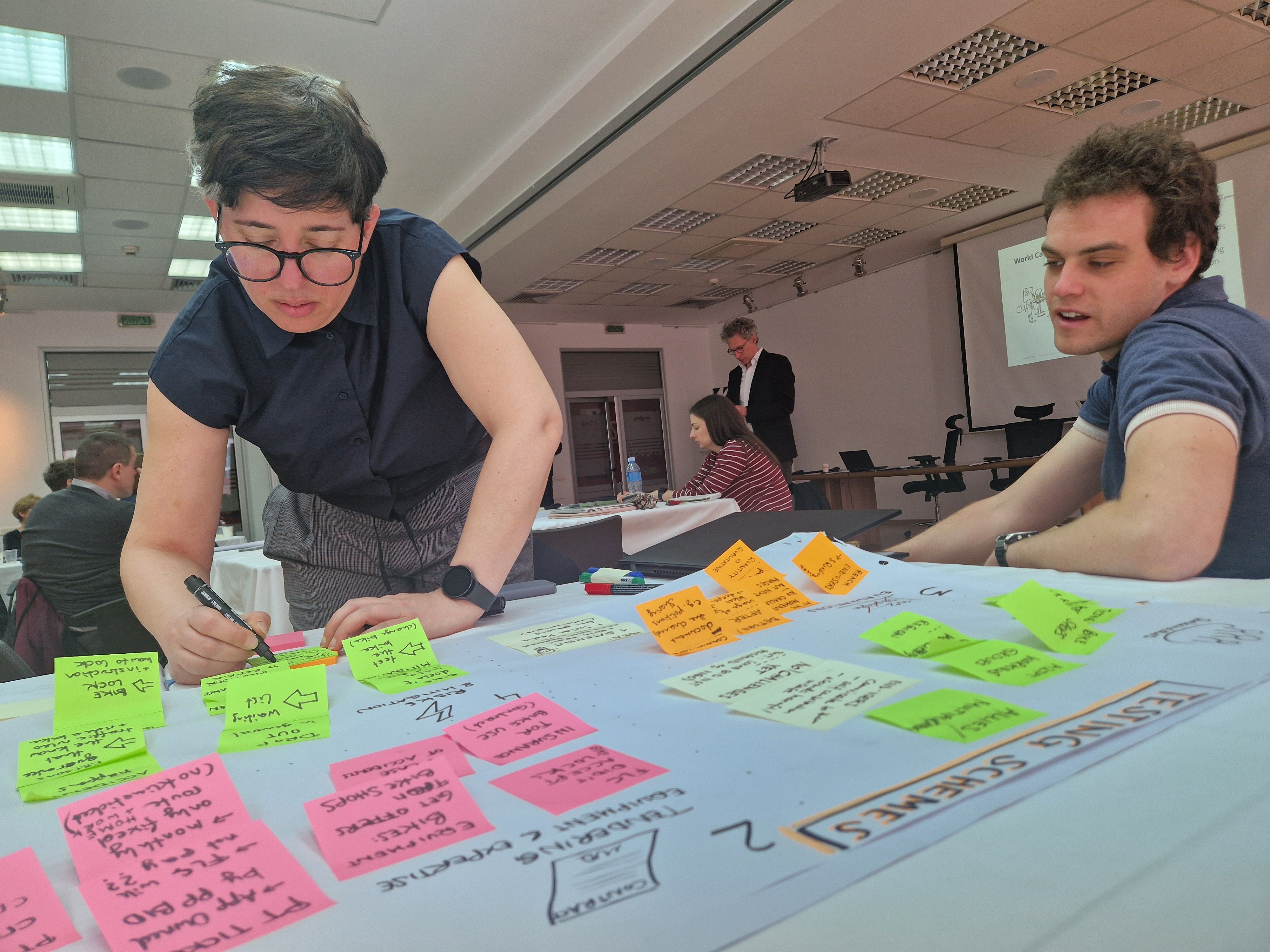
The project partners exchange experiences on a regular basis — here during a meeting in Belgrade. © Photo: Jitka Vrtalová
Regional Differences
While large cities are already making progress with bicycle-friendly measures and digital resources, rural areas continue to struggle with outdated infrastructure and limited accessibility. In the Danube region, a clear regional divide can be seen in the implementation of multimodal initiatives. Slovenia, Germany, and Austria currently have the most advanced strategies for active mobility and public transport. On a strategic level, the Czech Republic, Slovakia, and Hungary have also reached a similar level, particularly in urban areas.
In Croatia, Serbia, and Romania, there has been progress at the national level regarding cycling strategies, but walking and connections to bus and rail are still rarely addressed. Croatia and Serbia also face the challenge that their rail infrastructure — both for intercity connections and regional services — has not been modernised for decades. Only 40% of Serbian municipalities are connected to public transport, and electric cars are often unaffordable. This is why, especially in Serbia, shifting to e-bikes as feeders to public transport is a promising way to reduce dependence on fossil fuels in the transport sector.

The A2PT project consortium is getting to know the Bratislava regional transport pilot action on cross-border bicycle transport by bus to Hainburg an der Donau. © Photos: Veronika Vozárová | BID
Sharing Knowledge and Ensuring Sustainable Implementation
The nine pilot regions in the Active2Public Transport project highlight both similar and very different challenges and solutions. Knowledge, strategies, and practical examples are exchanged during meetings and technical excursions. Regional action plans have been developed in working groups involving key stakeholders, with implementation beginning in 2025. The project partners also draw inspiration from international good-practice examples and innovative initiatives from the partner countries.
In parallel, a practical online toolbox is being developed, which will be available after the project’s completion via klimaaktivmobil.at. It will provide municipalities, transport operators, and planners with hands-on guidance and aims to support the long-term expansion of multimodal mobility options. The goal: making walking or cycling to the bus and train an everyday reality throughout the Danube region.
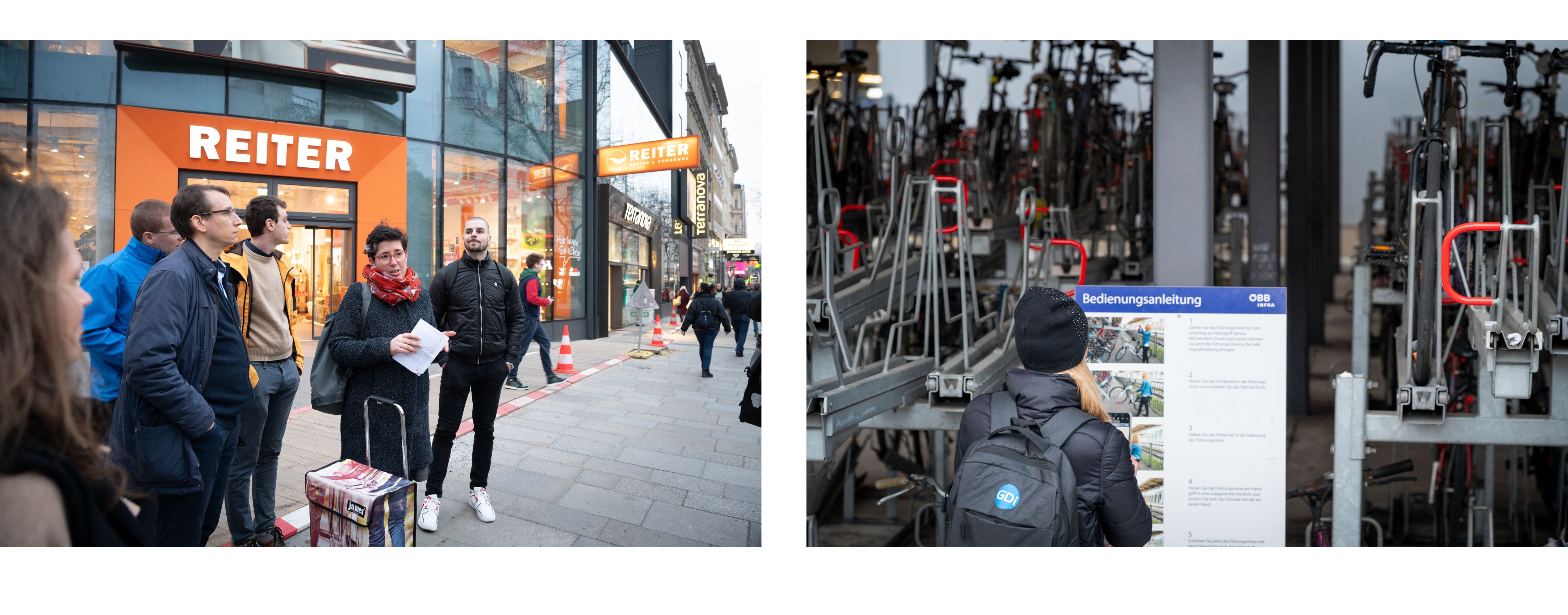
Study visit of the A2PT partners in Vienna: traffic-calming measures on Mariahilferstraße and bicycle parking at Westbahnhof. © Both Photos: Andrea Leindl | AEA
About the project
The Active2PublicTransport project is coordinated by the Austrian Energy Agency (AEA) as lead partner and co-financed by the Interreg Danube Region Programme. It was initiated by the Austrian Federal Ministry for Innovation, Mobility and Infrastructure, Department II/6, and is being implemented in cooperation with the national climate protection initiative klimaaktiv mobil.
Source: This article is republished with kind permission of the editor-in-chief Sophia Beiter from the Vienna-based Institute for the Danube Region and Central Europe (IDM). The original article was published in German language in the magazine „Info Europa“ issue 3/2025: „In Bewegung: Mobilität im Donauraum“ [On the move: Mobility in the Danube Region].
Citation: Bittner Irene & Jitka Vrtalová (2025): Multimodal unterwegs im Donauraum, in: Europa Info, 3/2025, p 9-12. [print & online] www.idm.at/en/info-europa-3-2025-in-bewegung-mobilitat-im-donauraum
News & Events
Read the most recent updates and explore the upcoming events.

